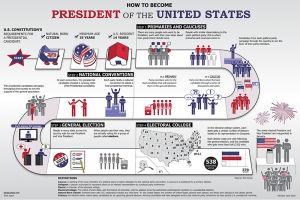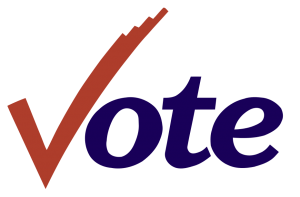Election 2020: Donald Trump vs Joe Biden, On the Issues

Chris Walker (@cwlkr20) also contributed to this article.
Last month, President Donald Trump and former Vice President Joe Biden formally accepted their respective party’s nominations for president. Tonight, they face off in their first debate before the general election. But what do they stand for?
Based on a recent Pew poll (July 27-Aug 2, 2020), let’s dive into the nominees’ positions on what voters consider the most important issues of the 2020 election. The voter response percentage is in parentheses.
Economy (79%)
Biden Voters: 72%, Trump Voters: 88%
President Trump: Before the COVID-19 (Coronavirus) pandemic, President Trump inherited a growing economy and did a good job of maintaining its growth. Per the Bureau of Labor Statistics’ December 2019 report, the US unemployment rate was at 3.5% and average wages were nearly $30 an hour. The President campaigned in 2016 on bringing back manufacturing jobs, however, and those numbers fell under his presidency. Just last year, an estimated 218,000 manufacturing jobs were lost after a boom in 2018. Those numbers have significantly worsened this year, and the President has since shifted focus to recovering the economic losses from the pandemic shutdowns. As of August 2020, unemployment was at 8.4% after a peak of 14.7% in April.
Vice President Biden: Biden released his “Build Back Better” plan in July 2020, and has emphasized employment opportunities to help combat the pandemic, improving American manufacturing and innovation, and purchasing American-made goods and services. It also includes measures for renewable energy infrastructure, addressing racial equity, and using new methods for childcare and elderly care to support working parents.
Health Care (68%)
Biden Voters: 84%, Trump Voters: 48%
Trump: While he has previously admired several forms of universal health care, and supported the Affordable Care Act’s (Obamacare) health care mandate, the former businessman campaigned on completely repealing Obamacare and establishing health savings accounts (HSAs). He also previously proposed allowing the sale of health insurance across state lines. What transpired in 2017 was a failed “repeal and replace” effort as public support for Obamacare grew rapidly. The President instead settled for a “skinny repeal” that revoked the individual mandate.
Biden: As Vice President, Biden was a champion of the Affordable Care Act. As such, his plans for health care are centered more around expansion than Medicare for All, which has been consistently unpopular. He intends to create a public option rather than dismantle it.
Supreme Court (64%)
Biden Voters: 66%, Trump Voters: 61%
Trump: President Trump has nominated three people to the Supreme Court: Associate Justices Neil Gorsuch (2017) and Brett Kavanaugh (2018), as well as his most recent nominee, Judge Amy Coney Barrett, whose confirmation hearings will begin in October. He has also appointed over 200 federal judges while in office. This is critical for his voters, who have long wanted changes in the judicial system.
Biden: As President Obama’s VP, Biden was a supporter of Judge Merrick Garland’s nomination in 2016 and now advocates that the winner of the 2020 election should fill the vacancy of the late Justice Ruth Bader Ginsburg. However, he is opposed to packing the Supreme Court.
Coronavirus (62%)
Biden Voters: 82%, Trump Voters: 39%
Trump: Obviously, COVID is rather omnipresent at the moment. The US alone has had more than 33 million cases and 200,000 deaths while nearly 3 million people have recovered. Critics have blamed President Trump’s response, and he has admitted to downplaying the severity of the virus to avoid panic. Yet, tracking the timeline of events, it is unclear what could have been done differently outside of rhetoric. The president has been a late adopter of masks, and his supporters have followed suit, but mask policy was contested until early April. Vaccine research has been ongoing since January at NIH, just one day before the first confirmed US case. However, it should be noted that he has hosted several rallies during the pandemic, and the late Herman Cain attended one before dying of COVID weeks later (though there is no confirmation he contracted it at the rally).
Biden: Biden has been a consistent critic of the president’s response to the pandemic, particularly following reports that the administration failed to follow the National Security Council’s (NSC) Pandemic Playbook and that former national security adviser John Bolton disbanded the NSC’s global health unit in 2018. The former vice president has held at least one phone call with Trump on addressing COVID-19 since April. In March, the former Senator outlined how his response would have been different had he been placed in a similar position. His current, seven-point plan centers around protecting essential workers, the elderly, and the vulnerable; instituting mask mandates; improved testing; and more.
Violent Crime (59%)
Biden Voters: 46%, Trump Voters: 74%
Trump: Trump has been consistent in his zero-tolerance rhetoric for violent crime. He’s cracked down on gangs like MS-13 and supported the national guard being sent into cities where there was civil unrest. His administration also clashed with civilians (“violent anarchists”) in Portland, Oregon who were suspected of vandalizing a federal courthouse. The president has blamed rising crime rates on Democrats, but murder rates are up 29 percent in Democrat-led cities and 26 percent in Republican-led cities. He also opposes defunding the police.
Biden: The former Delaware Senator, one of the authors of the 1994 crime bill, stated that he is opposed to defunding the police. He would instead support reforms to policing, proposing at least $300 million to “reinvigorate community policing.” Per NPR, he has proposed “a ban on police chokeholds, a new federal police oversight commission, new national standards for when and how police use force, more mandatory data collection from local law enforcement and other steps.”
Foreign Policy (57%)
Biden Voters: 57%, Trump Voters: 57%
Trump: The Art of the Deal author’s 2016 campaign lived by a two-word Trump Doctrine: “America First.” As such, his foreign policy agenda has been focused on doing what he felt was in the best interest of the American people. This included placing tariffs on countries like China, France, and Canada; withdrawing from multilateral agreements and non-government organizations like the United Nations’ Human Rights Council, the World Health Organization (WHO), and the Paris Climate Accord, as well as seek new treaties like the United States-Mexico-Canada Agreement (USMCA). He also sought to normalize relations with Russia and North Korea. Most notably, the administration recently negotiated peace deals between Israel and two Arab states: Bahrain and the United Arab Emirates (UAE).
Biden: Biden is effectively campaigning on rejoining many of the aforementioned organizations and treaties Trump jettisoned, including the Iran nuclear agreement. He claims that he will restore American leadership through a multitude of efforts such as hosting a “Summit for Democracy” and pledging to “end forever wars.”
Gun Policy (55%)
Biden Voters: 50%, Trump Voters: 60%
Trump: While the New York native has once again been endorsed by the NRA, he has also expressed support for stronger background checks as recently as August 2019. In March 2018, he signed the Fix NICS Act which, per FactCheck.org, “required federal agencies to submit semiannual certification reports to the attorney general on their compliance with record-keeping and transmission requirements, and to come up with plans to increase coordination and automated reporting.” He has gone back and forth on guns in schools in the past but notably proposed arming teachers in response to the Marjory Stoneman Douglas High School shooting in 2018.
Biden: Biden supports universal background checks, a national firearm registry, and a voluntary “national buyback program.” As a co-author of the Federal Assault Weapons Ban from the 1994 crime bill, he also supports “bans on assault weapons and high-capacity magazines.” He does not, however, support confiscating firearms.
Race and Ethnic Inequality (52%)
Biden Voters: 76%, Trump Voters: 24%
Trump: President Trump has been accused of racism both before and during his tenure in office. Much of this stems from his rhetoric on the campaign trail, some of which produced eventual policy (and, thus, debate). As such, he has constantly tried to prove his critics wrong. In February 2017, he signed an executive order establishing a “White House Initiative to Promote Excellence and Innovation” at historically black colleges and universities (HBCUs). In December 2019, he signed a bill that permanently provided $255 million a year in federal funds to HBCUs and “dozens of other institutions that serve large shares of minority students.” He also supported Asian American students who sued Harvard University over its affirmative action policies.
Biden: Vice President Biden has also been accused of racism, ironically by his running mate, Senator Kamala Harris of California, for his past relationship with African Americans, particularly his support for segregationist anti-busing legislation in the ’70s and “tough on crime” bills in the ’90s. He seems to have responded similarly to the President, citing his record and working to appease voters sympathetic to his policies. In August 2019, Biden called racism “a white man’s problem,” calling on lawmakers to be more forceful in rebukes of the President’s rhetoric and record. He has said that the President “abandoned the theory that we are one people” in the wake of two mass shootings in July 2019. He proposed investing $70 billion in HBCUs and put together a detailed plan for Black America. However, Biden’s repeated gaffes, such as telling voters they weren’t Black if they voted for Trump, haven’t been a good look.
Immigration (52%)
Biden Voters: 46%, Trump Voters: 61%
Trump: President Trump previously campaigned on mass deportation of over 11 million undocumented immigrants, constructing a wall on the Mexican border, increased border patrol officers, and restricting legal immigration. He was also a staunch opponent of birthright citizenship. All of these positions came to fruition in some form, through border wall funding debates, various travel bans, ICE raids on illegal immigrants, and changing birthright citizenship policies for children born abroad. Trump has made headlines for his public war with MS-13 (which has arguably been successful), but also with how ICE has mishandled children at the border who have been separated from their families.
Biden: The former Vice President has also previously indicated support for a fence at the southern border and punishing employers who hire illegal migrants. However, he seems to have had a change of heart during this campaign cycle. In December 2019, he proposed a new immigration plan, vowing to end the “cruel and senseless” policies of the Trump Administration, reinstate DACA, and ensure that ICE and CBP “abide by professional standards and are held accountable for inhumane treatment.” He also pledged to “modernize” the current immigration system, aiming to create a “roadmap to citizenship” as well as increase incentives and opportunities for legal immigration; to improve border screening; and to “tackle the root causes of irregular migration.”
Economic Inequality (49%)
Biden Voters: 65%, Trump Voters: 28%
Trump: During his 2016 run, Trump proposed jettisoning the current tax structure and replacing it with a four bracket system of 0%, 10%, 20%, and 25%. Additionally, he proposed a 15% maximum tax on businesses, claiming that the U.S. is the “highest taxed nation in the world.” This produced the Tax Cuts and Jobs Act of 2017, which kept the existing seven brackets but cut most of the individual tax rates and restructured the bracket thresholds (through 2025). It also permanently cut the corporate tax rate to 21%. The President has also donated his salary to various charities quarterly.
Biden: Biden previously supported a $12 minimum wage in 2015, with a gradual increase to $15 by 2020. In November 2019, Biden proposed a $1.3 trillion infrastructure plan, pledging to invest in public works projects and “revitalize” manufacturing, among other things. Per the campaign, “every cent” of this plan would be funded by “reversing the excesses of the Trump tax cuts for corporations; reducing incentives for tax havens, evasion, and outsourcing; ensuring corporations pay their fair share” and “closing other loopholes in our tax code that reward wealth, not work.” In December 2019, the former Delaware Senator proposed a $3.4 trillion tax plan, including a 28% corporate tax rate (with a 10% corporate minimum tax), a 21% tax on foreign profits, and a 39.6% top individual rate.
Climate Change (42%)
Biden Voters: 68%, Trump Voters: 11%
Trump: On the 2016 campaign trail, the New York native considered climate change and global warming a hoax. He also simultaneously pledged he would solve the California water crisis while claiming there was no drought and was an adamant supporter of the Keystone XL pipeline. The pipeline was eventually approved, although federal judges and the Supreme Court have ruled against fast-tracking it. He is also skeptical of the Green New Deal, telling a crowd at CPAC 2019 that it “would completely abolish the American oil, natural gas, coal, and nuclear power industries, of which we’re now the leader in the world.”
Biden: The former senator’s extensive plan for climate change targets “net-zero” greenhouse gas emissions by 2050. On top of this, his aforementioned infrastructure plan pledged to encourage the use of trains and electric vehicles, and would be funded, in part, by “ending subsidies for fossil fuels.” He also pledged to rescind the Keystone XL pipeline if elected.
Abortion (40%)
Biden Voters: 35%, Trump Voters: 46%
Trump: Trump has previously been pro-choice but has expressed sentiments against abortion, falling more in line with the Republican Party’s platform during the 2016 campaign. In March 2016, he described his position as “pro-life with exceptions.” He also described himself as being the “best protector of the sanctity of life” during an interview in May 2016. In addition, he previously expressed that Planned Parenthood doesn’t deserve federal funds as long as abortion is legal. In his 2019 State of the Union address, he addressed the issue more forcefully and in his 2020 address asked Congress to ban late-term abortions.
Biden: As a lifelong Catholic, the former senator has come under fire for his previous support of the Hyde Amendment, which bans most federal abortion funding. He also voted to ban late-term abortions during his time in the Senate. In June 2019, he publicly reversed his position on the matter, declaring himself pro-choice.
What do you think? Tune in tonight for the first debate, moderated by Fox News’ Chris Wallace! The second debate is on October 15th. The third debate is October 22nd. The vice presidential debate is October 7th.
Want to keep up with PubSquare Media? Follow us on Facebook, Twitter, and Instagram!




1 thought on “Election 2020: Donald Trump vs Joe Biden, On the Issues”